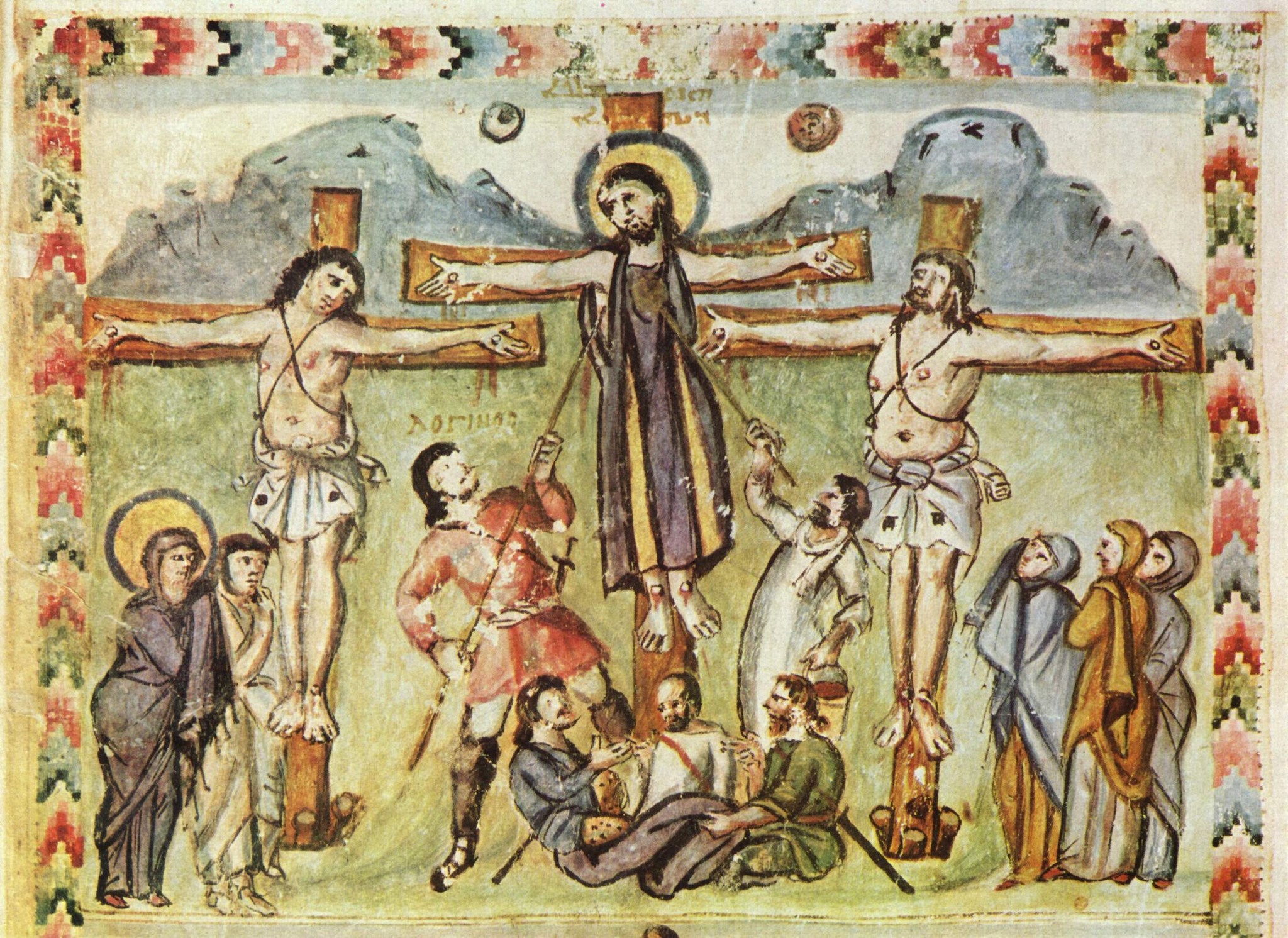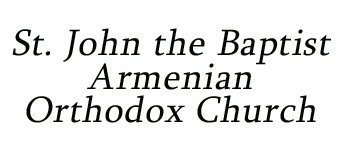ST. LONGINUS THE CENTURION
October 23, 2023

A 6th-century Syriac gospel book, known as the Rabula Gospels, which is one of the earliest Christian manuscripts to employ large, fully-rendered miniature illuminations.
Today the Armenian Church remembers an obscure figure from the gospel story: St. Longinus the Centurion.
Longinus is the name given to the Roman soldier who pierced the side of Christ with a lance during His crucifixion. That episode occurs in the Gospel of John 19:34. Longinus is also identified as the Roman centurion mentioned in the synoptic gospels who identified Jesus as the Son of God (Matthew 27:54 and Mark 15:39, as well as Luke 23:47, where the centurion calls Jesus “a righteous man”).
Scripture does not give this figure a name. But the apocryphal “Gospel of Nicodemus” names the spearman Longinus (which may be derived from “lonche,” the Latin word for lance). The same source also gives us the names of the two criminals crucified alongside Jesus: Dismas and Gestas.
Traditions about Longinus began in the early church, portraying him as one of the first Roman converts to Christianity, and he became regarded as a saint not only in the Armenian Church, but also in the Roman Catholic, Eastern Orthodox, and Oriental Orthodox churches. These stories proliferated in the medieval period, especially in connection to the miraculous properties of the Holy Lance, which is also known as the “Lance of Longinus.”
Readers of this page will know that one of the most sacred relics of the Armenian Church is the Holy Lance of Keghart, held to be the very lance that was used to pierce Christ’s body as the ‘coup de grace’ of his death on the cross. That precious relic is in the possession of the Mother See of Holy Ethmiadzin, and only a few weeks ago His Holiness Karekin II, the Catholicos of All Armenians, brought the Holy Lance out for public veneration, during the worldwide “Prayer for Artsakh.”
The artwork shown here is from a 6th-century Syriac gospel book, known as the Rabula Gospels, which is one of the earliest Christian manuscripts to employ large, fully-rendered miniature illuminations. It depicts the piercing scene from John’s gospel, with the name “LOGINOS” written above the spearman at left.


